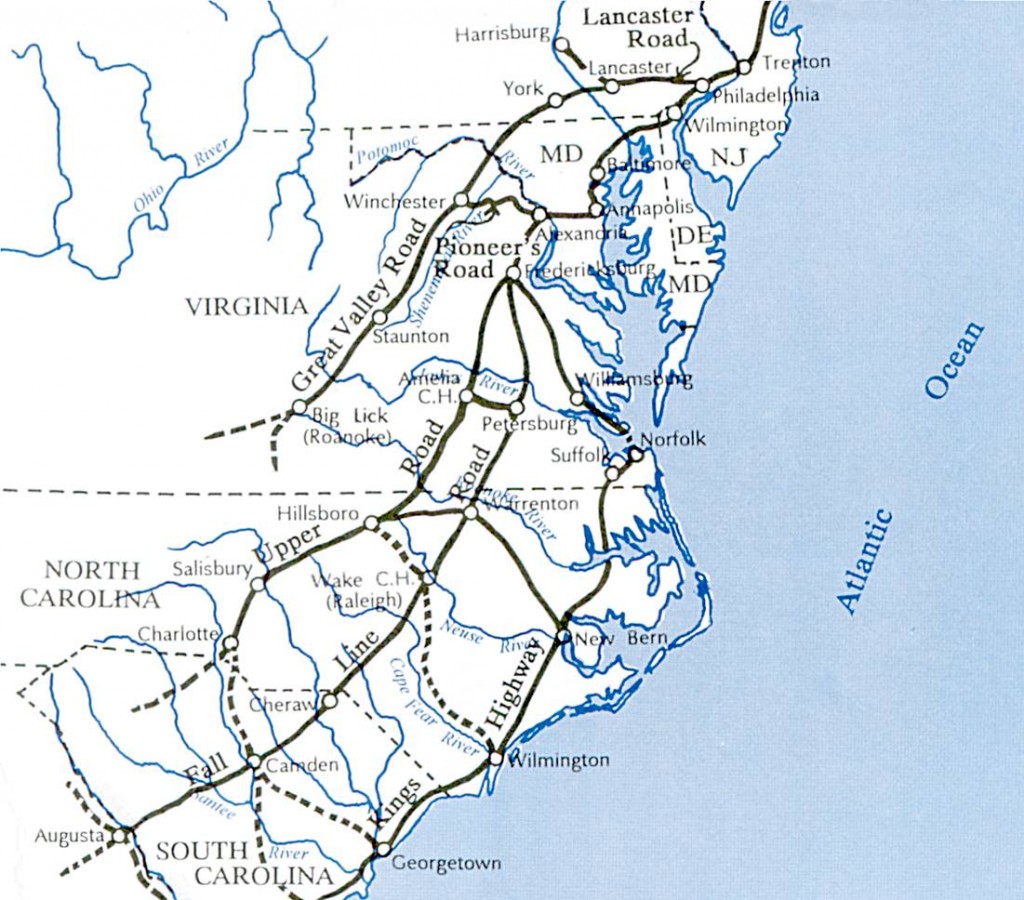The Great Wagon Road
The Great Wagon Road was a colonial American improved trail transiting the Great Appalachian Valley from Pennsylvania to North Carolina, and from there to Georgia.
The Great Wagon Road was the heavily traveled main route for settlement of the Southern United States, particularly the “backcountry“. This was the area that received the great proportion of migrating English people, Anglo-Irish, and Scots-Irish settling from other parts of Great Britain and Ireland, as well as smaller but still significant immigrant Germans from Hanover and other German states allied to Britain in the 18th century. The English, Anglo-Scottish, and Scots-Irish from the Anglo-Scottish border area were the largest group of settlers from the British Isles before the American Revolution.[1]
Beginning at the port of Philadelphia, where many immigrants entered the colonies, the Great Wagon Road passed through the towns of Lancaster and York in southeastern Pennsylvania. Portions of the Great Wagon Road traveled to present-day Mechanicsburg, about 30 miles (48 km) northwest of York. Mechanicsburg derives its name from the many mechanics who set up shop there to do business with the numerous wagon trains traveling through town.
Turning southwest, the road crossed the Potomac River at Harpers Ferry and entered the Shenandoah Valley at Winchester, Virginia, continuing south in the valley via the Great Warriors’ Trail (also called the Indian Road, as on this map), which was established by centuries of Indian travel. The Treaty of Lancaster had established colonists’ rights to use the Indian Road. The Shenandoah portion of the road is also known as the Valley Pike (U.S. Highway 11).
South of the Shenandoah Valley, the road reached the Roanoke River at the town of Big Lick (today, Roanoke). South of Roanoke, the Great Wagon Road was also called the Carolina Road. At Roanoke, a road forked southwest, leading into the upper New River Valley and on to the Holston River in the upper Tennessee Valley. From there, the Wilderness Road led into Kentucky.
From Big Lick/Roanoke, the Great Wagon Road passed through the Roanoke River Gap to the east side of the Blue Ridge Mountains. It continued south through the Piedmont region. It passed through the present-day North Carolina towns of Winston-Salem, Salisbury, and Charlotte (all part of the Piedmont Crescent and sites of earlier Indian settlements on the historic Indian Trading Path). The Great Wagon Road ultimately reached Augusta, Georgia on the Savannah River.
Despite its current name, the southern part of this road was by no means passable by wagons until later Colonial times. The 1751 Fry-Jefferson map on this page notes the term ‘Waggon’ only north of Winchester.

